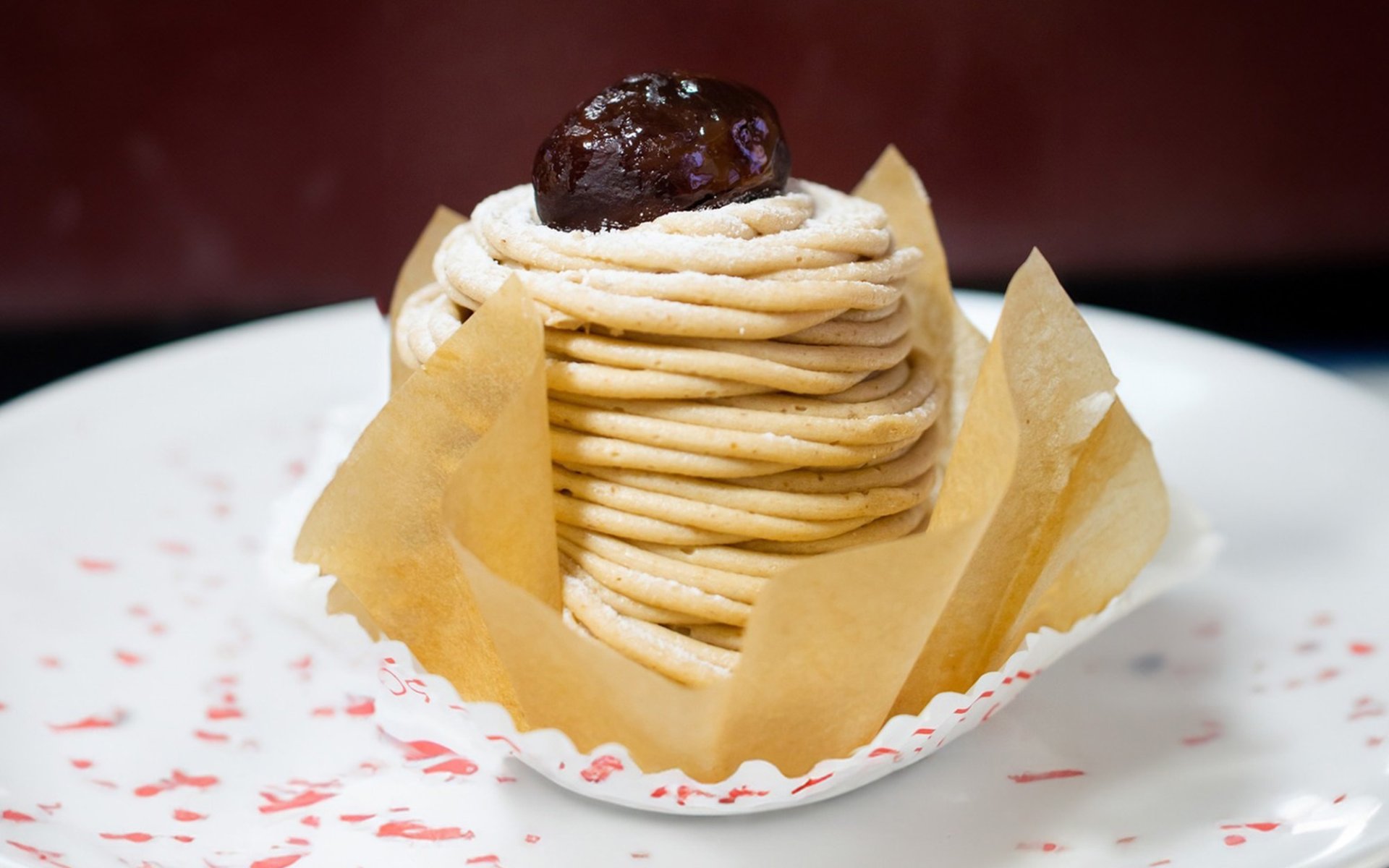Mont Blanc

Mont Blanc, also known in Italian as Montebianco, is a dessert that has played a significant role in French and Italian culinary culture for centuries. Its origins date back to the 15th century, coinciding with the first introduction of chestnuts to Europe, making them a crucial ingredient in many desserts of that era.
Mont Blanc is a dessert made from puréed chestnuts, piped into a dome shape, and topped with pristine white whipped cream. Its appearance resembles the snow-capped peak of Mont Blanc in the Alps, hence its name, which means White Mountain. The origin of Mont Blanc is said to have been first conceived in Piedmont, Italy, as an original recipe appeared in the first Italian cookbook, De Honesta Voluptate, by Bartolomeo Platina, in 1475. This initial recipe was relatively simple, consisting of puréed chestnuts dusted with powdered sugar, marking the beginning of this renowned dessert.
From Italy to France: Evolution into Elegance
However, the recipe later reappeared in Opera dell'Arte del Cucinare by Bartolomeo Scappi, a renowned Italian chef of the Renaissance era. Consequently, in the 17th century, Mont Blanc began to gain recognition in France, becoming popular in the royal court and among the nobility.
The creation of Mont Blanc as we know it today originated from the Dessat pastry shop in Paris in 1847. This pastry shop developed Mont Blanc into a more luxurious form by piping puréed chestnuts into fine strands, shaping them into a tall dome, and meticulously decorating it with fluffy whipped cream on top. It was named in French as Mont Blanc aux Marrones (Mont Blanc with Chestnuts). In a short time, this version of Mont Blanc gained widespread popularity in France and became a prominent classic dessert.
Later, in 1903, the Angelina tea room in Paris further elevated Mont Blanc, making it its signature dish, famous worldwide. This tea room not only served the chestnut purée topped with whipped cream but also added a thin, crispy meringue base to provide a textural contrast between the soft chestnuts and the crisp meringue. It was also adorned with various toppings, steadily increasing Mont Blanc's popularity and making it known in many countries across Europe and Asia, including France, Italy, Switzerland, Hungary, and Japan.
Mont Blanc in Japan: Endless Adaptations and Innovations
In 1933, Mont Blanc was introduced to Japan by Sakota Jimao, a famous Japanese pastry chef. The story goes that Mr. Sakota tasted the original Mont Blanc during a visit to Paris and was captivated by its unique taste and shape. He brought the recipe back to his homeland and opened the first Mont Blanc shop in Japan, named Tokyo Jiyugaoka Mont-Blanc, located in the Jiyugaoka district of Meguro, Tokyo, marking the dessert's debut in the Land of the Rising Sun.
However, his shop developed a new version of Mont Blanc, adapting it to Japanese tastes that prefer softer textures and vibrant colors:
- Changed the cake base: From the traditional meringue base, which could be somewhat firm for some, to Castella, a soft and airy Japanese sponge cake, making it easier to eat.
- Changed the type of chestnut: Instead of using the plain brown European chestnut purée, he opted for candied chestnuts (Kuri Kanroni), which are sweet and have a bright yellow hue. This resulted in a new Mont Blanc with a distinct yellow color from the candied chestnuts, a key characteristic of the Japanese-style Mont Blanc.
Furthermore, the dome part made from chestnut purée has also seen adaptations in its ingredients, such as sweet potato, pumpkin, or incorporating cocoa powder and matcha green tea powder to add a variety of flavors and colors. The decoration of the cake top has also taken on various other shapes, such as inverted pointed cones, or sometimes the chestnut cream is piped to cover the entire cake base in beautiful patterns, and many other variations. As a result, Mont Blanc has become a popular dessert in pastry shops and restaurants worldwide today, maintaining its classic charm alongside continuous innovation.


